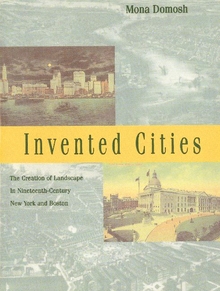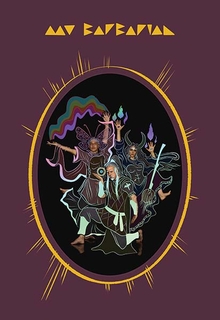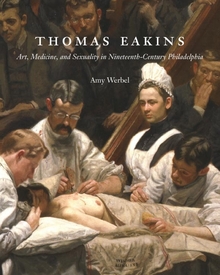Invented Cities
WARNING
You are viewing an older version of the Yalebooks website. Please visit out new website with more updated information and a better user experience: https://www.yalebooks.com
The Creation of Landscape in Nineteenth-Century New York and Boston
Mona Domosh
Using an interdisciplinary approach that encompasses economics, politics, architecture, historical and cultural geography, and urban studies, Domosh shows how the middle and upper classes of Boston and New York, the "building elite," inscribed their visions of social order and social life on four landscape features during the latter half of the nineteenth century: New York’s retail district and its commercial skyscrapers, and Boston’s Back Bay and its Common and park system. New York’s self-expression translated into unlimited commercial and residential expansion, conspicuous consumption, and architecture designed to display wealth and prestige openly. Boston, in contrast, focused more on culture. The urban gentry limited skyscraper construction, prevented commercial development of Boston Common, and maintained homes and parks near the business district. Many fascinating lithographs illustrate the two cities’ contrasting visions.
A selection of Architects’ and Designers’ Book Club
"Drawing from an impressive knowledge of cultural geography, architectural history, and urban form, she argues that the distinctive features of the two cities emerged from the conflicting impulses of their respective power brokers. . . . Domosh presents a clearly articulated synthesis that should put to rest any notion that architectural form can be discussed without a deep understanding of cultural context."—Adam M. Sweeting, American Book Review
"A stimulating example of the ’new’ cultural geography."—Virginia Quarterly Review
"Significant for its multilayered approach to understanding the city, Domosh’s work is worthy of a careful read."—Choice
"A thoughtful book. . . . In this volume the author explains the divergent development of New York and Boston in the nineteenth century by analyzing and interpreting landscapes unique to each city. . . . We would do well to read her book carefully, for in the urban forms of the nineteenth century the future of the American city surely lies."—Gabrielle Esperdy, New England Quarterly
"An excellent overview of the integrated dynamics that gave rise to Boston’s and New York City’s uniquely different urban forms and contents. . . .This is compacted into an easily read 160 pages, providing both practitioners and students of design and planning a first-hand case study of the realm in which they currently, or will shortly, ply their trades."—Bob Scarfo, Landscape Journal
"Invented Cities makes a convincing case for the importance of considering symbolic representation as a significant factor in the production of architectural form. And it presents scholars and general readers alike with a fascinating account of the complex range of forces involved in the production of symbolic landscapes, as well as the ways in which these landscapes themselves are engaged in and representative of broader processes."—Katherine Solomonson, Journal of Society of Architectural Historians
"Domosh offers an engagingly detailed . . . history of her subject, extensively and effectively illustrated with photographs and maps."—Carl Smith, Journal of American History
"This book moves beyond existing studies and unpacks the meaning architecture held for its clients, deepening our understanding of architectural and urban form."—Daniel Bluestone, author of Constructing Chicago
Publication Date: April 20, 1998
79 b/w illus.







